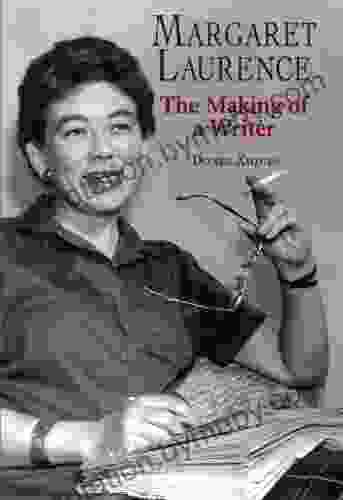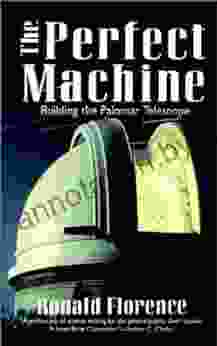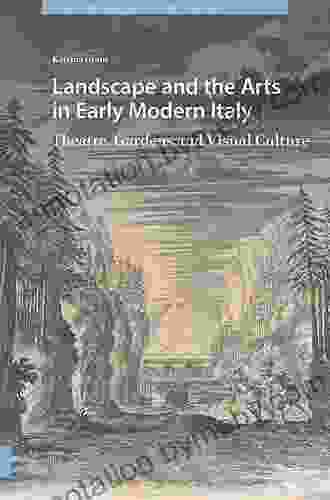The Perfect Machine: Building the Palomar Telescope, a Monument to Human Ingenuity

In the serene hills of San Diego County, nestled amidst towering pines and pristine mountain air, stands a testament to human ingenuity and scientific ambition: the Palomar Telescope. Built between 1936 and 1948, this colossal instrument was once the largest optical telescope in the world, ushering in a new era of astronomical exploration and forever changing our understanding of the cosmos.
The genesis of the Palomar Telescope can be traced back to the early 20th century, a time when astronomers were pushing the boundaries of observational astronomy. Telescopes, the primary instruments for studying celestial objects, had undergone significant advancements, but there was a growing realization that larger and more powerful instruments were needed to penetrate the darkness and unlock the secrets of the universe.
4.6 out of 5
| Language | : | English |
| File size | : | 917 KB |
| Text-to-Speech | : | Enabled |
| Screen Reader | : | Supported |
| Enhanced typesetting | : | Enabled |
| X-Ray | : | Enabled |
| Word Wise | : | Enabled |
| Print length | : | 654 pages |
In 1928, the California Institute of Technology (Caltech) embarked on a visionary project to build the world's largest telescope. George Ellery Hale, a renowned astronomer and the director of Caltech's Mount Wilson Observatory, played a pivotal role in securing funding and rallying support for this audacious undertaking.
The search for a suitable site for the telescope began in 1934. A team of Caltech scientists and engineers scoured the mountains of Southern California, seeking a location that met stringent criteria. The ideal site needed to be remote, with clear skies, low humidity, and a stable atmosphere.
After extensive surveys, Mount Palomar was chosen as the ideal location for the telescope. Perched at an altitude of 5,500 feet, with minimal light pollution and exceptional atmospheric conditions, Mount Palomar offered the perfect environment for astronomical observations.
The construction of the Palomar Telescope was a triumph of engineering and innovation. The telescope's massive steel dome, measuring 135 feet in diameter, was a marvel in itself. It weighed an astonishing 1,000 tons and could be rotated effortlessly to track celestial objects.
The telescope's primary mirror was an equally impressive feat of precision engineering. Measuring 200 inches (5.1 meters) in diameter, it was the largest mirror ever made at the time. The mirror was cast and polished to an extraordinary degree of accuracy, ensuring sharp and clear images of celestial objects.
The Palomar Telescope was dedicated on June 3, 1948, amidst great fanfare and excitement. The first images captured by the telescope revealed a stunning universe previously unseen. The telescope's unprecedented light-gathering power allowed astronomers to penetrate deeper into space, revealing distant galaxies, nebulae, and star clusters.
The Palomar Telescope played a pivotal role in some of the most significant astronomical discoveries of the 20th century. In 1952, Edwin Hubble used the telescope to measure the distance to the Andromeda galaxy, confirming that it was outside our own Milky Way galaxy. This discovery challenged the long-held belief that the Milky Way was the entire universe.
Another groundbreaking discovery made using the Palomar Telescope was the detection of quasars, extremely luminous and distant objects powered by supermassive black holes. The discovery of quasars revolutionized our understanding of the evolution of galaxies and the nature of the universe itself.
Over the decades, the Palomar Telescope has continued to be a workhorse of astronomical research. It has been used to study the birth and death of stars, the formation of galaxies, and the nature of dark matter. The telescope has also been instrumental in the search for exoplanets, planets that orbit stars other than our own.
The Palomar Telescope's rich history of scientific discoveries has earned it a place among the most important astronomical instruments ever built. It has been recognized as a National Historic Landmark and is a popular destination for tourists and astronomy enthusiasts.
In his book "The Perfect Machine: Building the Palomar Telescope," author David Levy tells the captivating story of the telescope's construction and its impact on scientific understanding. Levy weaves a compelling narrative, drawing on interviews with scientists, engineers, and historians involved in the project.
The book provides a fascinating glimpse into the challenges and triumphs faced by the team that built the Palomar Telescope. It delves into the intricate engineering details, the technological innovations, and the human drama behind this scientific masterpiece.
The Palomar Telescope is a testament to the power of human curiosity and the relentless pursuit of knowledge. It is a reminder that through ingenuity, collaboration, and unwavering determination, we can push the boundaries of our understanding and unlock the secrets of the universe. The telescope continues to be a source of inspiration for scientists, engineers, and dreamers alike, inspiring generations to come.
4.6 out of 5
| Language | : | English |
| File size | : | 917 KB |
| Text-to-Speech | : | Enabled |
| Screen Reader | : | Supported |
| Enhanced typesetting | : | Enabled |
| X-Ray | : | Enabled |
| Word Wise | : | Enabled |
| Print length | : | 654 pages |
Do you want to contribute by writing guest posts on this blog?
Please contact us and send us a resume of previous articles that you have written.
 Book
Book Novel
Novel Page
Page Chapter
Chapter Text
Text Story
Story Genre
Genre Reader
Reader Library
Library Paperback
Paperback E-book
E-book Magazine
Magazine Newspaper
Newspaper Paragraph
Paragraph Sentence
Sentence Bookmark
Bookmark Shelf
Shelf Glossary
Glossary Bibliography
Bibliography Foreword
Foreword Preface
Preface Synopsis
Synopsis Annotation
Annotation Footnote
Footnote Manuscript
Manuscript Scroll
Scroll Codex
Codex Tome
Tome Bestseller
Bestseller Classics
Classics Library card
Library card Narrative
Narrative Biography
Biography Autobiography
Autobiography Memoir
Memoir Reference
Reference Encyclopedia
Encyclopedia Dominique Pearson
Dominique Pearson Donald Kasen
Donald Kasen Dom Joly
Dom Joly Eric Siegel
Eric Siegel Don Hollway
Don Hollway Dennis W Magee
Dennis W Magee Dimitrios Kravvaris
Dimitrios Kravvaris Ryan Johnston
Ryan Johnston Rick Stanton
Rick Stanton Lise Eliot
Lise Eliot Disamis Arcia Munoz
Disamis Arcia Munoz Diane Tober
Diane Tober Erin Entrada Kelly
Erin Entrada Kelly Dionne Brand
Dionne Brand Delphi Classics
Delphi Classics Roy Kinnard
Roy Kinnard Debra D Sullivan
Debra D Sullivan Diane Bair
Diane Bair Richard Nairn
Richard Nairn Pliny The Elder
Pliny The Elder
Light bulbAdvertise smarter! Our strategic ad space ensures maximum exposure. Reserve your spot today!

 Houston PowellUnveiling the Complete Guide for Beginners: Your Gateway to Endless Knowledge
Houston PowellUnveiling the Complete Guide for Beginners: Your Gateway to Endless Knowledge
 Darren NelsonLost Boys Two Of The American Nomads: An Unforgettable Odyssey Into the Heart...
Darren NelsonLost Boys Two Of The American Nomads: An Unforgettable Odyssey Into the Heart... Wayne CarterFollow ·5.8k
Wayne CarterFollow ·5.8k Lee SimmonsFollow ·13.2k
Lee SimmonsFollow ·13.2k Todd TurnerFollow ·9.4k
Todd TurnerFollow ·9.4k Vincent MitchellFollow ·6.9k
Vincent MitchellFollow ·6.9k Mario SimmonsFollow ·6.3k
Mario SimmonsFollow ·6.3k Joe SimmonsFollow ·9.6k
Joe SimmonsFollow ·9.6k Peter CarterFollow ·2.4k
Peter CarterFollow ·2.4k Nathan ReedFollow ·8.3k
Nathan ReedFollow ·8.3k

 Cruz Simmons
Cruz SimmonsGuide To Pencak Silat Kuntao And Traditional Weapons:...
Immerse yourself in the captivating world of...

 Dalton Foster
Dalton FosterUnlock Your Financial Freedom: Dive into the ABCs of Real...
Are you ready to embark on a...

 George Orwell
George OrwellThe Advanced Guide to Real Estate Investing: Your...
Are you ready to embark on...

 Will Ward
Will WardMargaret Laurence: The Making of a Writer
Margaret Laurence (1926-1987) was one of...

 Jorge Amado
Jorge AmadoThe ABCs of Property Management: A Comprehensive Guide...
Owning and managing rental...
4.6 out of 5
| Language | : | English |
| File size | : | 917 KB |
| Text-to-Speech | : | Enabled |
| Screen Reader | : | Supported |
| Enhanced typesetting | : | Enabled |
| X-Ray | : | Enabled |
| Word Wise | : | Enabled |
| Print length | : | 654 pages |










